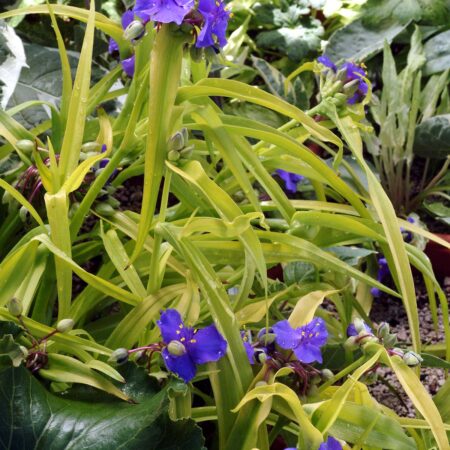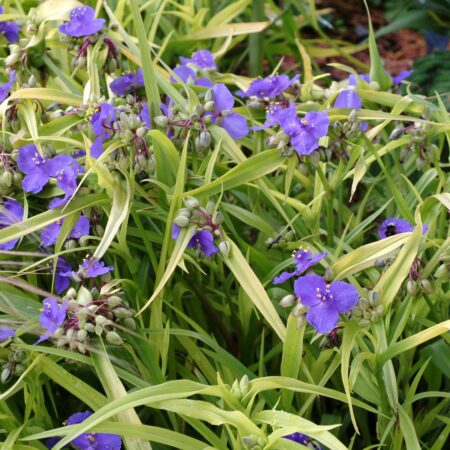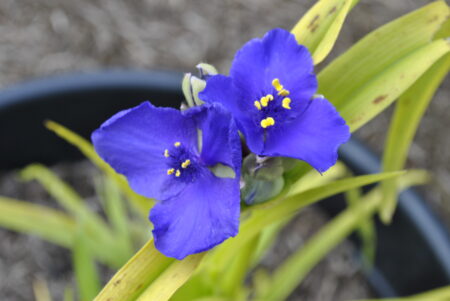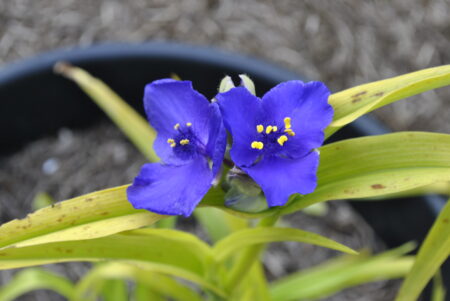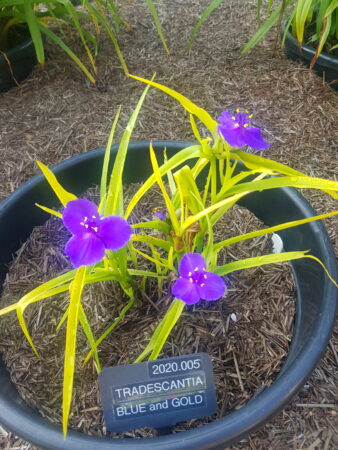Details
| Full name | Tradescantia (Andersoniana Group) ‘Sweet Kate’. |
| Name status | Accepted, the valid name for a unique cultivar. Established in a nomenclatural standard herbarium specimen (“Tradescantia (Andersoniana Group)”, 2000). Also known as:
Hawke (2010) considered ‘Blue and Gold’ to be the earliest name and ‘Sweet Kate’ a synonym, but this was later confirmed to be a mistake (Richard Hawke, personal correspondence, May 2022). ‘Sweet Kate’ is now accepted, as the oldest and most widespread name in use. |
| Origins | Discovered by Mrs Stevens in her garden, introduced by Hillier Nurseries (“Tradescantia (Andersoniana Group)”, 2000). |
| Classification | Like other hardy garden hybrids, it is now placed in the Andersoniana Group. These hybrids are sometimes mislabelled as Tradescantia virginiana or the invalid botanical hybrid Tradescantia × andersoniana. |
| Legal protection | None. |
| Availability | Mass-produced and widely available. |
Description
Preserved and described in a nomenclatural standard herbarium specimen (“Tradescantia (Andersoniana Group)”, 2000), with reference to the RHS Colour Chart.
| Cultivar group | Tradescantia Andersoniana Group. |
| Foliage | Stems are yellow (1C) and bright green (4C). Leaves are bright green (150B to 150C), fading to yellow (153D). |
| Flowers | Flower stalk is 2.5cm long, purple (more blue than 72B). Sepals are 1.5cm long, pale green (145B to 145C). Petals are bright powdery blue (88A). Stamen filaments are purple (87A to 82A), anthers are yellow (12A). |
References
Tradescantia (Andersoniana Group). (2000). [Herbarium specimen, barcode WSY0026562]. RHS Wisley Herbarium.
Hawke, R. G. (2010). A Comparative Study of Tradescantia Cultivars. Plant Evaluation Notes, 34. Internet Archive link.

